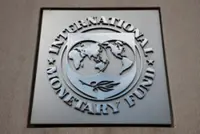Wuji Tianyuan Temple is among the most popular cherry blossom spots in New Taipei City. — Photos: Unsplash
Sakura hanami, a Japanese phrase that translates to “cherry blossom viewing”, is the act of enjoying and appreciating the view of blooming cherry blossom trees.
It is an activity that entails holding picnics or outdoor parties where the trees grow in abundance, such as parks and riversides. This isn’t a strictly daytime activity either; the nighttime version of this is termed “yozakura”. Various sakura viewing places in Japan will illuminate the trees using lights – some disguised as paper lanterns – for this purpose.
The ephemeral nature of this delicate flower means that there is only a short window when hanami can be executed. Usually, full bloom happens from late March to early April, but due to climate change, it’s been observed worldwide that peak bloom dates are moving earlier by up to a week.
You’ll have to keep an eye on the annual forecast to avoid missing the enchanting sea of pretty pink petals.
Fortunately, if you can’t catch any of the blooms in Japan, there are alternative destinations you could consider.
Typically, tourists would flock to Seoul or Jeju when it comes to cherry blossom chasing in South Korea. To make trips more memorable here, you can choose to look specifically for the King Cherry Blossom, which is a variation that is unique to Korea and blooms in mid-April.
This variety’s natural habitat are Jeju and Daedunsan, a mountain in South Jeolla, but it can also be found in certain parts of Gyeonggi-do, such as Misari Speedboat Park and Yangpyeong Dumulmeori.
Suwon, Gyeonggi-do’s capital, has the more common Yoshino cherry blossom but nevertheless aesthetically pleasing to look at, as it paints the distinctive pink landscape that people think of when they hear “sakura”.
This little island may not have as much hyped prominence as neighbouring Japan and Korea when it comes to hanami, but it is actually one of the best places in East Asia to view the beautiful cherry blossom (known as “ying hua” in Mandarin).
It’s due to the fact that the prized flower begins to bloom as early as January (in places like Baoshan and Aowanda) up until early April (such as in Shizhuo and Alishan).
Wuji Tianyuan Temple, in the Tamsui District of New Taipei City (not to be confused with the capital city Taipei), is one of the most visited hanami spots in north Taiwan.
Blooming at the back of the temple is the unique tri-coloured cherry blossom, a hybridised species from Japan that results in pink, white and peach-coloured petals. If you missed this, you can still catch the Yoshino cherry blossom that blooms there about a month later.
You’re probably aware that cherry blossoms can also be found in the cooler northern parts of South-East Asia. The difference is in certain places it blooms in winter (December to January) instead of spring (February to March).
Most tourists would gravitate towards Thailand (usually Chiang Mai) for it, but Vietnam similarly offers numerous hanami spots. Dalat is popular for its biennial flower festival that has been held since 2005, while Sapa has its famed sakura-covered hillsides.
Over in Dien Bien’s Pa Khoang Lake, the annual festival held at its Hoa Island or Cherry Blossom Island – the trees are imported from Japan and grown locally – also celebrates the country’s diplomatic ties with Japan.
There are also the cherry blossom village in Hanoi’s Nhat Tan, which is equally famous for peach blossom, and Kon Tum’s Mang Den, whose residents are being encouraged to plant more cherry blossom trees in an effort to turn the town into a cherry blossom haven.
Dong Van in Ha Giang, the province named Asia’s leading emerging destination by World Travel Awards (WTA) in 2023, boasts charming towns and villages that blush pink every March, such as Pho Bang, Sung La and Lolo Chai.
Macon, Georgia may be the “Cherry Blossom Capital Of The World” (thanks to the 350,000 Yoshino cherry trees there) but Japan is indubitably the place most synonymous with the flower.
There are roughly 300 cherry blossom varieties in Japan, and most of them are pink, making them quite interchangeable when not inspected closely. However, there is one that will have no risk of such misidentification: The Weeping Cherry Blossom Tree or Shidarezakura.
Its name denotes the “weeping” characteristics that include drooping branches and blooms that cascade downwards in a waterfall-like appearance.
If you’d like to witness its magnificence in person, you’ll have to go to Japan – hence Japan’s inclusion here despite the premise of this list.
Rather than visiting the oft-mentioned ones like Fukushima Prefecture’s Miharu Takizakura (that’s about a century old) or Yamanashi Prefecture’s Yamataka Jindai-zakura (two centuries old!), head to Fukui Prefecture instead to see the tree that has been standing at Asuwa Shrine for more than 370 years.
With the Hokuriku Shinkansen extending its line from Tokyo to Fukui from March 16, you can now easily journey to the prefecture thanks to the improved access.
Kungstradgarden (The King’s Garden) in Stockholm is often ranked as among the best – if not the best – European destination for cherry blossoms.
Every April, the park holds a Cherry Blossom Festival (falling on April 28 this year), which isn’t just for viewing the beautiful blooms but doubles as a day for celebrating Japanese culture. Japanese workshop, performances and activities are held during the festival.
This commemorates the fact that the trees were gifted by Japan – an act known as the “cherry blossom diplomacy” that Japan practices with countries it has diplomatic ties with – to Sweden’s current and longest-reigning monarch, King Carl XVI Gustaf, in 1998.
However, Kungstradgarden is not the sole spot for hanami, as more and more cherry blossom trees can be found throughout Sweden.
Other options include Luma Park in the Swedish capital’s south-east area, Botaniska Tradgarden in Gothenburg, and Karsbarsdalen (which translates to Cherry Valley) in Lund that blooms not pink but white, every May.
If pink’s not your thing, go for white cherry blossom. From mid-March to early April, the slopes of the Jerte Valley in the Cáceres province in Spain transforms into a snow-white wonderland.
The “transformation” begins from the lower areas of the valley and gradually spreads to the higher areas as more white flowers begin to bloom.
This ethereal landscape is courtesy of the two million Picota cherry trees that are native to the valley. Depending on the time you visit, you could either be enjoying the view of the white flowers, or you could be having fun picking the sweet cherries.










